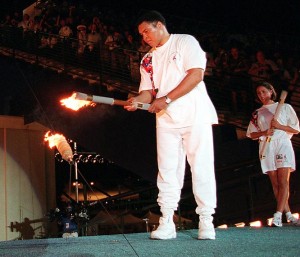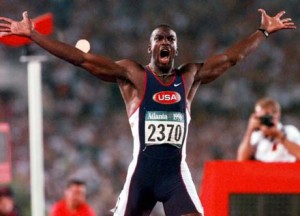A Look Back at the 1996 Summer Olympics 25
Atlanta was a surprise selection to host the Centennial Olympic Games in the summer of 1996, as many observers believed that the Games should be held in Athens, Greece since the inaugural games were held there in 1896.
But thanks to lobbying from former Atlanta mayor Andrew Young, Atlanta was chosen to host the Centennial Games on September 18, 1990.
Nearly six years later, the city hosted the opening ceremonies in front of 85, 000 fans at Centennial Olympic Stadium (now Turner Field).
The ceremonies ended in dramatic fashion with 1960 Olympic Gold Medalist Muhammad Ali, lighting the Olympic Torch, signifying the start of the Games.
Ali would receive a replacement gold medal for the one he lost, at halftime of the men’s basketball gold medal game.
As far as the competition was concerned, the Americans were expected to dominate the medal count as this would be the first Olympics with the former countries of the Soviet Union participating as individual countries.
The individual with the highest expectations entering these Olympics was U.S. sprinter Michael Johnson, who was trying to become the first man to win the 200-meter and 400-meter races in the same Olympiad.
Johnson had performed this feat at the 1995 Track & Field World Championships, and one month earlier, he broke the world record in the 200 m with a time of 19.66 seconds.
Wearing golden shoes, Johnson won the 400 m with an Olympic record time of 43.49 seconds, and then won the 200 m with by shattering his own world record, running that race in a remarkable 19.32 seconds.
It was redemption for Johnson who had entered the 1992 Olympics as the favorite to win the 200 meters, but failed to qualify for the final heat.
Johnson was not the only U.S. Olympian to pull off a historic feat in Atlanta as U.S. swimmer Amy Van Dyken became the first woman to win four gold medals at the same Olympiad.
Van Dyken won two individual races, the 50m freestyle and the 100m butterfly, and was part of the 4 x 100 meter freestyle relay and the 4 x 100 meter medley relay in earning her four gold medals.
Van Dyken’s performance came in a banner Olympics for American woman, as the woman’s basketball, softball, soccer, and gymnastics teams all won gold medals. Read the rest of this entry →


